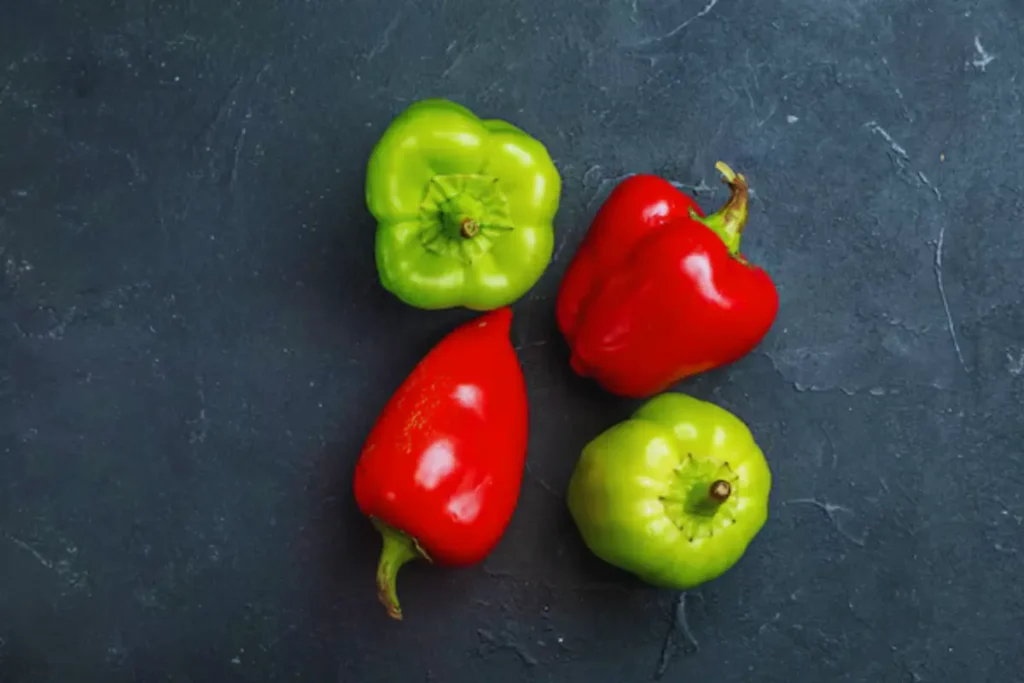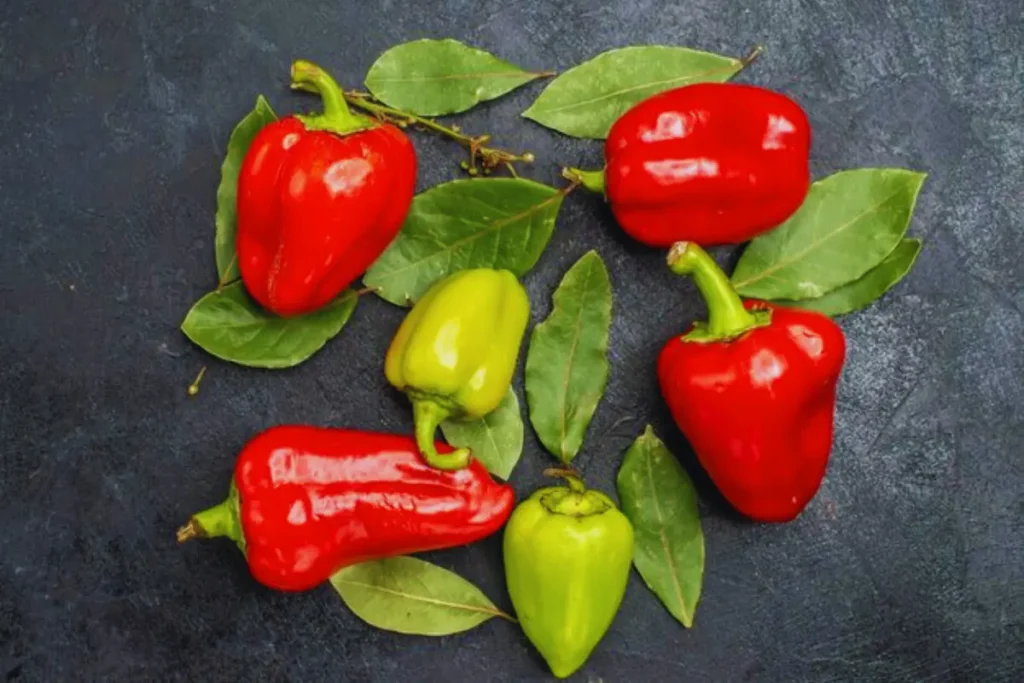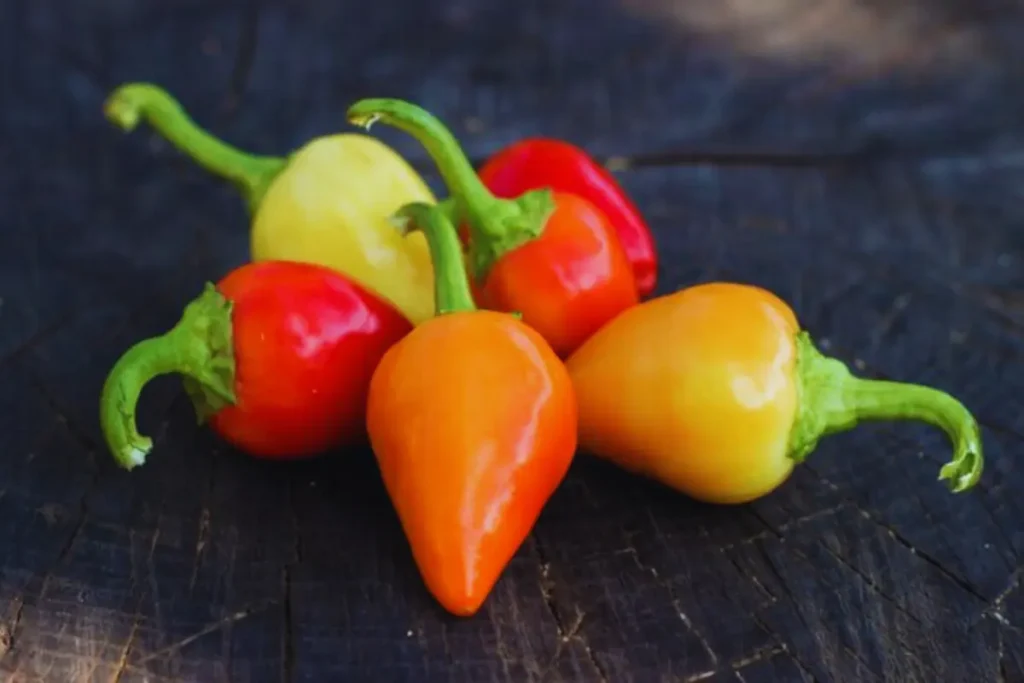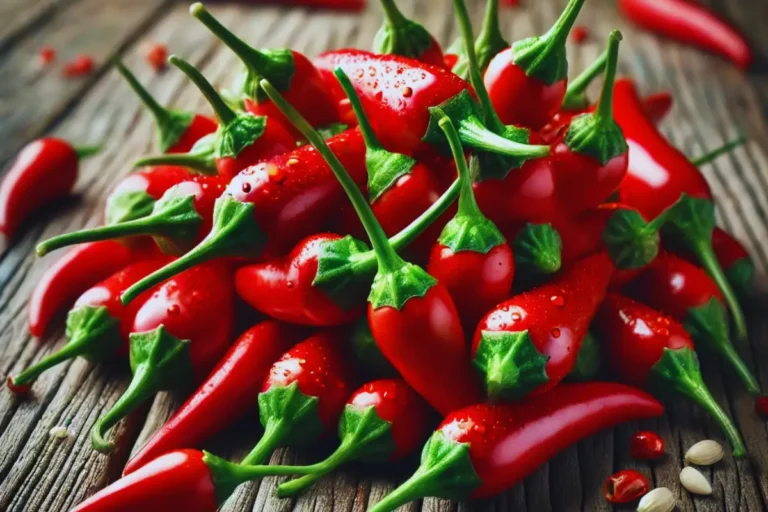Rocoto Pepper: All about the pepper
What are the Rocoto Pepper?
Rocoto peppers are a fascinating variety of chili known for their distinctive flavor, fiery heat, and rich history in South American cuisine. These peppers stand out due to their unique appearance, thick flesh, and black seeds, making them a favorite among chili enthusiasts. In this comprehensive guide, we’ll explore everything you need to know about Rocoto peppers, from their origin to their Scoville rating, and their role in culinary traditions.

How Hot Is Rocoto Pepper?
Rocoto peppers are known for their moderate to high heat, ranging between 30,000 to 100,000 Scoville Heat Units (SHU). This heat level places them in the same category as Serrano peppers but below the intense heat of Habanero and Ghost peppers. Despite their fiery nature, Rocoto peppers are also appreciated for their fruity and tangy undertones, which add depth to their flavor profile.
If you’re new to spicy foods, Rocoto peppers might be challenging at first, but their balanced flavor makes them worth trying in moderation.
Where Is Rocoto Pepper From?
Rocoto peppers, also known as Capsicum pubescens, have their roots in the Andes Mountains of South America, particularly in Peru, Bolivia, and Ecuador. They are one of the oldest cultivated chili species in the world, dating back thousands of years. Unlike other chili varieties, Rocoto peppers thrive in cooler, high-altitude climates, which is why they are often referred to as “tree peppers” due to their perennial shrub-like growth.
In Andean cuisine, Rocoto peppers are a staple ingredient, appearing in iconic dishes like Rocoto Relleno, a stuffed pepper dish that perfectly highlights their heat and flavor.
What Is the Hottest Pepper in the World?
While Rocoto peppers are quite hot, they are far from being the hottest in the world. That distinction belongs to the Carolina Reaper, which boasts a staggering heat level of 1.6 to 2.2 million SHU. Other challengers include the Ghost Pepper (Bhut Jolokia), Trinidad Moruga Scorpion, and Pepper X. These peppers are primarily used for extreme heat lovers and specialty hot sauces, unlike Rocoto peppers, which are more versatile for everyday cooking.
Rocoto Pepper Scoville
The Scoville scale, used to measure the spiciness of chili peppers, places Rocoto peppers in the 30,000 to 100,000 SHU range. This means they are several times hotter than a jalapeño (2,500-8,000 SHU) but not as fiery as Habanero peppers (100,000–350,000 SHU). This balance of heat makes Rocoto peppers a great choice for those who enjoy medium-to-high levels of spice without overwhelming the palate.
Culinary Uses of Rocoto Peppers
Rocoto peppers are versatile and can be used in a variety of dishes, thanks to their thick, juicy flesh and unique flavor. Here are some popular ways to use Rocoto peppers in cooking:
- Rocoto Relleno: This traditional Peruvian dish involves stuffing Rocoto peppers with a mix of meat, onions, cheese, and spices, then baking them to perfection.
- Salsas and Hot Sauces: Their fruity undertones and intense heat make them ideal for spicy condiments.
- Soups and Stews: Add Rocoto peppers to soups and stews for a spicy kick that complements the dish’s flavors.
- Grilled or Roasted: Grilling or roasting enhances their natural sweetness and smoky flavor.
Why Are Rocoto Peppers Unique?
Rocoto peppers are unlike most chili varieties due to their thick walls, black seeds, and their ability to thrive in cool climates. Their apple-like appearance, with colors ranging from red to orange and yellow, makes them visually appealing as well. Additionally, their heat level combined with a fruity flavor profile makes them a versatile ingredient that stands out in any dish.
Fun Facts About Rocoto Peppers
- Rocoto peppers belong to the species Capsicum pubescens, which is known for its hairy stems and leaves.
- They are one of the few pepper species that can survive cooler climates, making them unique among chili varieties.
- Their thick flesh and fruity notes make them an excellent substitute for bell peppers in recipes that require a spicy twist.

Culinary Ideas and Recipes with Rocoto Peppers
Rocoto peppers are not only visually striking but also highly versatile in the kitchen. Their medium-to-high heat and fruity undertones make them a star ingredient in various dishes. Below are more culinary ideas and a simple recipe to try at home.

Culinary Ideas
- Stuffed Rocoto Peppers (Rocoto Relleno)
A traditional Peruvian dish, these peppers are stuffed with a savory filling of ground beef, onions, spices, and cheese, then baked to perfection. The thick walls of Rocoto peppers hold up well to cooking, making them ideal for stuffing. - Rocoto Pepper Salsa
Blend Rocoto peppers with tomatoes, onions, cilantro, and lime juice to create a spicy, tangy salsa that pairs beautifully with grilled meats or tortilla chips. - Pickled Rocoto Peppers
Slice Rocoto peppers and pickle them with vinegar, garlic, and spices for a tangy, spicy condiment that can elevate sandwiches, tacos, and more. - Spicy Soups and Stews
Add chopped Rocoto peppers to soups or stews to introduce a depth of flavor and heat. - Rocoto Hot Sauce
Blend roasted Rocoto peppers with vinegar, garlic, and a touch of sugar for a versatile hot sauce that balances heat and sweetness.
Simple Recipe: Rocoto Relleno (Stuffed Rocoto Peppers)
Ingredients:
- 4 large Rocoto peppers
- 1 lb ground beef or pork
- 1 medium onion, finely chopped
- 1 garlic clove, minced
- 1 cup cooked rice
- 1 cup shredded cheese (like mozzarella or cheddar)
- 2 tablespoons olive oil
- Salt and pepper to taste
Instructions:
- Prepare the Peppers: Cut the tops off the Rocoto peppers and remove the seeds and membranes (wear gloves to avoid irritation). Set aside.
- Cook the Filling: Heat olive oil in a pan, sauté onions and garlic until fragrant. Add ground meat, cook until browned. Mix in cooked rice, season with salt and pepper.
- Stuff the Peppers: Fill the hollowed peppers with the meat mixture, then top with shredded cheese.
- Bake: Place the stuffed peppers in a baking dish, cover with foil, and bake at 375°F (190°C) for 30 minutes. Remove foil and bake for another 10 minutes until cheese is melted and bubbly.
- Serve: Enjoy your Rocoto Relleno with a side of potatoes or a fresh salad.
Fun Fact: Rocoto Relleno in Peruvian Cuisine
In Peru, Rocoto Relleno is often served with “papas a la huancaína,” a creamy potato dish, creating a perfect balance between heat and richness.
Tips for Growing Rocoto Peppers at Home
If you love Rocoto peppers and want to grow them yourself, you’re in for a rewarding experience! Unlike many other chili varieties, Rocoto peppers thrive in cooler climates, making them an excellent choice for gardeners in temperate regions.
Growing Rocoto Peppers: Step-by-Step Guide
1. Choose the Right Location
Rocoto peppers prefer a location with:
- Partial to full sunlight (4–6 hours daily).
- Cooler temperatures (optimal range: 50°F–75°F or 10°C–24°C).
- Well-drained soil rich in organic matter.
2. Planting Rocoto Seeds
- Germination: Start seeds indoors 8–12 weeks before the last frost. Rocoto seeds require a warmer environment (around 80°F or 27°C) to germinate. Use a seedling heat mat if needed.
- Transplanting: Once the seedlings have 4–6 true leaves and outdoor temperatures are stable, transplant them into your garden or larger pots.
3. Watering and Feeding
- Keep the soil consistently moist but not waterlogged. Overwatering can lead to root rot.
- Fertilize every 2–3 weeks with a balanced fertilizer or one higher in phosphorus to encourage flowering and fruiting.
4. Pest and Disease Management
- Watch for pests like aphids and whiteflies. Use natural insecticides or introduce beneficial insects like ladybugs.
- Prevent diseases by ensuring good air circulation around the plants and avoiding wetting the foliage during watering.
5. Harvesting
- Rocoto peppers are ready to harvest when they turn vibrant red, orange, or yellow, depending on the variety. Gently twist or cut them from the plant to avoid damage.
Why Grow Rocoto Peppers?
- Unique Features: Rocoto peppers’ thick walls and black seeds make them a standout in any garden.
- Cool Climate Adaptability: Unlike most chilies, Rocoto peppers thrive in cooler, high-altitude environments.
- High Yield: Rocoto plants are perennials in frost-free climates and can produce peppers for several years.

Additional Tips for Success
- If you live in a hot climate, grow Rocoto peppers in partial shade to protect them from excessive heat.
- Use deep pots or containers if growing indoors or on a balcony, as Rocoto plants develop extensive root systems.
- Provide sturdy support like stakes or cages; Rocoto plants can grow up to 6 feet tall.
Culinary and Garden Combination
Growing Rocoto peppers allows you to enjoy their fresh flavor in your favorite dishes, from Rocoto Relleno to homemade salsas. Plus, their colorful fruits add an ornamental touch to your garden.
Conclusion:
Why Rocoto Peppers Deserve a Spot in Your Life:
Rocoto peppers are truly a unique gem in the world of chilies. With their rich history, vibrant colors, and distinctive flavor, they offer a perfect balance of heat and fruitiness that enhances a variety of dishes. Whether you’re savoring them in a traditional Rocoto Relleno, spicing up your meals with Rocoto salsa, or enjoying the satisfaction of growing them at home, these peppers bring both flavor and excitement to the table.
From their medium-to-high Scoville rating to their versatility in culinary and ornamental gardening, Rocoto peppers are a must-try for chili enthusiasts and gardeners alike. Dive into the world of Rocoto peppers and discover their fiery charm today!



